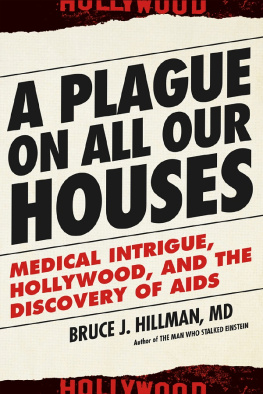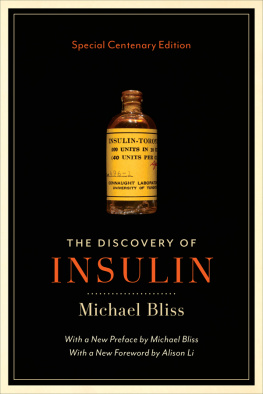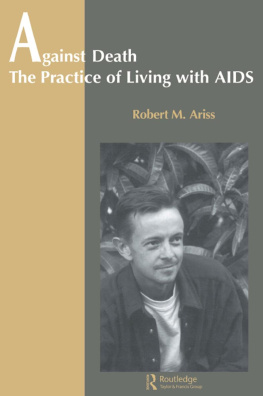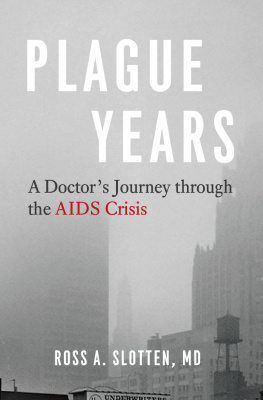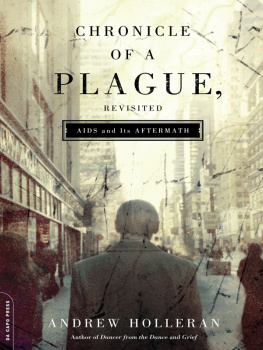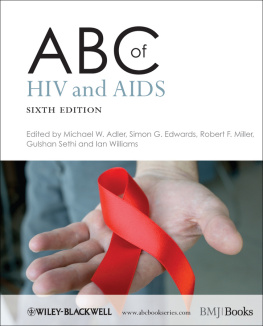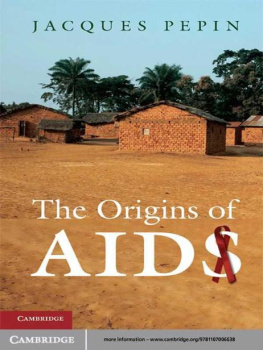
ACKNOWLEDGMENTS
A Plague on All Our Houses could not possibly have been written without the assistance of numerous individuals. At the heart of the book is the information gleaned from interviews with people who worked with AIDS and AIDS patients during the early years of the epidemic. First and foremost, my thanks go to Dr. Michael Gottlieb, who spent tens of hours of his time running down archived documents and sitting for interviews about his thoughts and actions between 1980 and 1988. Dr. Gottlieb fully cooperated with the project, knowing that I would be interviewing individuals who might contradict him and whose views would also be included in this book.
I also am grateful to a number of other individuals who afforded me their time and the opportunity to interview them. Only a handful of people who I believe may have substantive information that would have been valuable to readers understanding of the events described in the book failed to respond positively to my invitations.
A number of physicians involved in the early years of the AIDS epidemic unstintingly shared their experiences: Dr. Samuel Broder, AIDS researcher and former director of the National Cancer Institute, now working as an adviser to a number of innovative companies; Dr. John Hanks, a medical school classmate of Dr. Gottlieb and recently retired University of Virginia surgeon; virologists Harold Burger and Barbara Weiser, married to each other, who related invaluable personal experiences concerning the discovery of the AIDS virus; Dr. Andrew Saxon, emeritus chief of UCLAs Division of Clinical Immunology and Allergy, who was Dr. Gottliebs immediate superior; and Dr. Kenneth Shine, chair of the UCLA Department of Medicine and later dean of the School of Medicine, who was very much in the middle of the events described in this book. Other physicians whose input was invaluable to my understanding are Dr. Gottliebs UCLA colleague Dr. Peter Wolfe; Dr. Martin Shapiro, chief of the Division of General Medicine in the Department of Medicine at UCLA; Dr. Robert Wolf, the intern who referred the first case of AIDS seen by Dr. Gottlieb, later a pharmaceutical company executive; Dr. Marc Conant, retired AIDS clinician and researcher, who provided unique insights into his patients attitudes concerning AIDS; and Dr. Frederick Siegal, a retired specialist in HIV/AIDS medicine who served on an early grants committee of amfAR.
I am deeply indebted to several other people who are important voices in this book: Cindy (Gottlieb) Sapp, who shared her memories of the people and places associated with her former husbands work; Kathryn Petersilie, Dr. Gottliebs assistant and laboratory technologist, who told me wonderful stories, many of which appear in these pages; and Dr. Gottliebs daughter Jillian, who described her growing up years and her fathers influence on her decision to attend medical school and help the medically underserved. Jim Chud and Peri Ribotto provided information that was invaluable to my understanding of HIV/AIDS and the period of discovery.
I thank news reporter Ake Spross of the Upsala Nya Tidning for locating and sharing with me his e-mail exchanges concerning the controversy associated with the awarding of the 2008 Nobel Prize. Steve Schulte, former director of the Los Angeles Gay and Lesbian Center, and Bill Misenhimer, former executive director of AIDS Project Los Angeles and first chief executive officer of amfAR, were extremely helpful in affording me the benefit of their insights concerning the inner workings of AIDS organizations. Don and Cindy Moran shared their insights into what transpired concerning AIDS within the Reagan White House. The current chief executive officer of amfAR, Kevin Robert Frost, took the time to explain to me his thinking in updating and correcting the organizations understanding of its history in preparation for its thirtieth anniversary in 2016. Jonathan Canno helped clarify actions taken by amfARs board of directors.
Publishing a book is a team effort. My agent, Claire Gerus, applied her extensive knowledge and experience to guide me past some potentially poor choices of publishers to my relationship with ForeEdge, an imprint of the University Press of New England, and my excellent editor, Stephen Hull. Stephen taught me a great deal about how to keep readers on course and oriented to the story. I also thank my production editor, Peter Fong, for his encouragement and for his efforts to recover time lost in the production process.
Finally, I am grateful beyond words to three women who have had a profound effect on my writing. One is my twelfth-grade English teacher at Miami Beach Senior High School, Ann Hendricks, who first told me that she thought I had a talent for writing and encouraged me to develop it. A little encouragement can last a lifetime. Another is my second cousin, Merle Gordon, whose optimism in the face of serious difficulties I would hope to emulate. Merles relating her experiences working in the dramatic arts in New York during the 1980s helped my understanding of the people and events of that era. Foremost, I am grateful to my wife, Pam Wexler, for her interest in and support of my writing. In particular, I am thankful for her patiently listening to me read to her each chapter of this book as it was written. The exercise may have put her to sleep at times, but her attention to detail and advice on what would be of greatest importance to readers was invaluable to my producing the best book of which I am capable.
ONE
One Sick Queen
Dr. Michael Gottlieb lifted his eyes from the patients chart he was reviewing and waved his fellow, Howard Schanker, into his tiny basement office. He shoved aside a short stack of journals to clear a space for his younger colleague to sit, then listened as Schankers Bronx-tinged voice detailed what he had learned about a patient he had discussed with a medical intern, Dr. Robert Wolf. Their conversation set in motion a chain of events leading to Gottliebs discovery of a new, previously undetected disease that in short order would engulf the entire world in a deadly epidemic that persists to the present day.
Wolf had admitted his patient to the hospital through the University of California Los Angeles emergency room. Baffled by the patients constellation of findings, Wolf presented the case to the chair of UCLAs Department of Medicine, Dr. Kenneth Shine, during Shines weekly clinical teaching rounds. Shine suggested that Wolf contact Dr. Gottlieb, a newly hired assistant professor who specialized in immunology. The timing was perfect, as Gottlieb had recently asked Schanker to keep an eye out for new patients who might be suitable for his immunology teaching sessions with medical students and house staff.
Dr. Gottlieb was sufficiently intrigued by what Schanker told him that he immediately accompanied him to the patients bedside so that he could personally assess the mans clinical findings. What Gottlieb saw was a thin, very ill-looking, thirty-year-old man, whose close-cut, bottle-blonde hair accentuated his haggard appearance.
The patient told Gottlieb that he had been in perfect health until roughly a month earlier, when he had rapidly become ill. He reported suffering from fever and reckoned that he had lost more than thirty pounds, at least in part because a sore throat made swallowing food excruciatingly painful. He was discomforted by skin ulcerations surrounding his anus.
Candida is ubiquitous in nature, but actual clinical infection is strictly opportunistic, meaning that illness only occurs in individuals who have a deficient immune system, like some patients undergoing treatment for cancer or taking drugs to prevent rejection of a transplanted organ. This patient fit into neither category.
Next page
